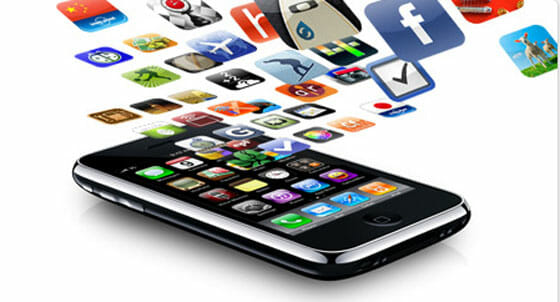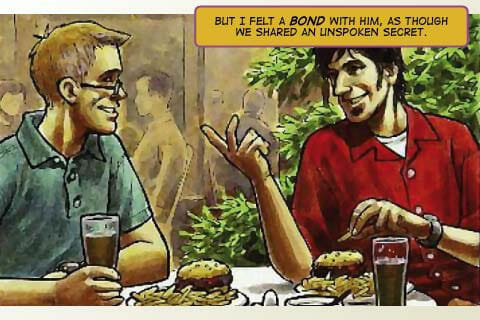 Soon after the iPhone was introduced, Apple rolled out its extension of the wildly successful iTunes store, the App store. The easy and cheap availability of thousands of apps, combined with the groundbreaking touchscreen interface of the iPhone, created a wave of e commerce that’s been rolling ever since.
Soon after the iPhone was introduced, Apple rolled out its extension of the wildly successful iTunes store, the App store. The easy and cheap availability of thousands of apps, combined with the groundbreaking touchscreen interface of the iPhone, created a wave of e commerce that’s been rolling ever since.
In January 2010, there were over 100,000 apps in the App store, and they had been downloaded over three billion times, all in less than 18 months. Tapulous, Inc., a game developer, reports sales of almost a million dollars a month from game apps. Their top game is Tap Tap Revenge, which retails for $0.99.
But You’re A Book Publisher?
What does this have to do with you and me? All those apps aren’t just games, location finders for the nearest Starbucks, and to-do list organizers. Books are the fastest growing category of apps in the App store, although their total number is overshadowed by games, far and away the largest category—so far.
It’s a lot easier to release a book as an app for the iPhone and iPod Touch than to develop a new game. These apps will also work on the new iPad. According to Ben Lorica of O’Reilly Media,
Roughly 6 out 10 of the Books on the app store sell for 99 cents or less, and 1 in 20 are free. The number of premium priced Books (i.e. those priced at $10 or more) has grown from roughly 1 in 50 Books 12 weeks ago, to 1 in 10 during the most recent week.
This represent explosive growth in both the number of titles available and the total revenue being generated by those titles. While designers struggle with eBook formats, and everyone looks to the Kindle for ease of use and the iPad for the future of books combined with rich media, the humble book-as-app has been gaining steam.
As Danny O. Snow pointed out at the recent BAIPA Get Published! Workshop, only 5 million Kindles have been sold, and the iPad might sell 5 million units within its first year of production. But there are already 50 million smart phones that can be used as e book readers, and that number could quickly grow to over 100 million. Which market would you rather be in?
The Reality of the Small Screen
I purchased an iPhone when the 3GS model came out, in June of last year. I never expected to use it for reading anything other than email and the occasional Google search. But over time, I’ve been surprised at how often, and how much, I read on the phone. One of my first downloads was the free Stanza eReader, for which there are many free ebooks. Stanza has an easy-to-use interface and makes reading as pleasant as feasible on a phone screen. My second download was a free, searchable complete works of Shakespeare.
The longer I’ve had the phone, the more I seem to have adjusted to the small screen. While I would have been pretty skeptical about ever reading a book on my phone, I’m not so skeptical any more. With the controls provided by many of the ereaders, you can customize the reading experience enough to make it quite tolerable. If you work with fine typography every day, you have to be able to ignore that aspect of the book experience.
Multimedia on the Small Screen
Lest we forget, the iPhone is a fully-functional multimedia player, with audio, video and GPS capabilities along with its touchscreen and accelerometer (motion sensitive) controls. For authors like BAIPA’s Lee Foster, the author of many books of travel photography, this has been a boon for the two books he’s published as apps.
Using the iPhone’s mapping function and GPS locator, Lee has been able to put “tappable” maps into his book app so that readers can find the exact spot from which a particular photo was taken, or locate themselves on a map to find nearby destinations, among other things. The photos, although small, are in beautiful color. I’m sure Lee could have added some audio narration or a video introduction as well. Don’t you think we’ll be seeing “books” like that in the App store soon, if they aren’t there already?
It’s up to the publisher, of course, to decide just how many bells and whistles they want to add to their books. A book intended for education can make use of all this rich media pretty easily. Reading a novel, on the other hand, is probably best left to plain text.
So What Kinds of Books Do We Have?
I can’t claim any great familiarity with the huge number of books in the app store, but I find it interesting to see the different ways this capability is being used. Let’s look at three different books and the ways their publishers have taken advantage of packing them as apps.
- Craphound by Cory Doctorow, remixed from his Futuristic Tales of the Here and Now The iPhone makes a terrific platform for comics and illustrated novels. This was a fun read, with really good comic art and a sci-fi type of story line. This is an actual-size shot of one of the panels:
- Is There a Book Inside You? by Dan Poynter. Dan, the “godfather of self-publishing” is a real fan of ebooks, and it’s no surprise he arrived early on the iPhone with his own app. Dan has created an interesting hybrid. This is not actually a book, but contains dozens of his free reports as well as videos of Dan and other resources.
In addition, he has at least five separate opt-in screens to collect names and email addresses and shoot them straight back to his website, where you can sign up for various newsletters and other offers he makes. A great example of providing value and acquiring new subscribers at the same time. Here’s a screen that shows some of the many documents available:
Both Craphound and Dan Poynter’s books are free downloads.
- SEO Warrior by John I Jerkovic, published by O’Reilly Media. This book, a major work on Search Engine Optimization, was published in November 2009. The print version is 496 pages. Here’s the really interesting thing, and a strong clue we are still in an experimental phase with this new format. The print version of this book costs $44.99. The ebook version from O’Reilly’s website, in any of the popular formats, costs $35.99. Compare to the app version in the App store at $4.99. That’s a savings of 72% off the regular ebook formats. The book is identical.

In the App store, few apps cost over a dollar or two, and $4.99 is already on the way to a premium price. We’ve grown accustomed to these prices, and they may seem shockingly low.
However, as self-publishers we have a different slant on this pricing. As Lee Foster points out, he makes more from selling 2 copies of one of his books as apps, which are priced at $1.99 each, than he does from the sale of 1 copy of a trade paperback, sold by his publisher Countryman Press, for $14.95, simply because his royalty on the apps is 30%, unheard of in print book publishing.
No Need to Wait for the Future
I think this is one of the most exciting parts of the ebook revolution. Just thinking about the 50 million people (not all iPhones, obviously) out there with smartphones in their pockets and purses makes any marketer sit up and pay attention. The ease of buying these books, the impulse-purchase type of pricing, and the low barrier to entry make this an area I’ll want to explore for my own publications. How about you?
Takeaway: Selling books as apps in Apple’s App Store represents a terrific new opportunity for book publishers to reach new audiences.





